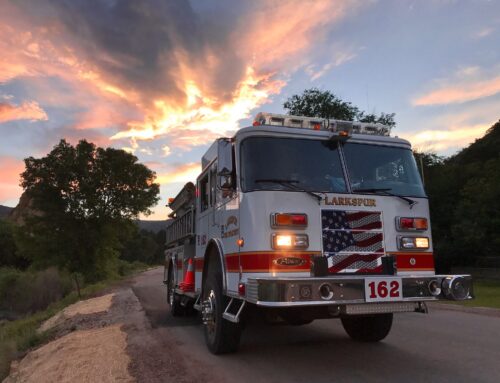Fueling Arizona’s Collective Effort to Battle COVID-19
Published on January 15, 2021

Under normal circumstances, the following are all true: Hospitals and health systems within a given geographic area compete with one another. The migration to digital processes takes a back seat to more pressing matters, often progressing at a snail’s pace. And taking the path of least resistance is typically the preferred strategy for getting through the day. But these are far from normal times.

One of those common themes is that the collaborative nature of Arizona’s COVID-19 response has helped to ensure that patients receive the level of care they need in a timely manner, no matter where they live.

The Arizona Department of Health Services (ADHS) launched the Arizona Surge Line, a 24/7 statewide phone line, in April. Jessica Rigler — another of the panelists and the assistant director of public health preparedness at ADHS — described the Surge Line as, “one of the most significant innovations in this response.” It’s a 24/7, toll-free line that, “facilitates the inter-facility transfer of patients during an emergency if there’s a surge in a particular health system,” she explained. The service helps providers find available beds and appropriate care.
“It’s really such a hallmark of collaboration between the entire healthcare system in Arizona,” Rigler said. “We can get real-time data from all the hospital systems throughout the state. About 85% of all bed capacity and 95% of all potential receiving beds in the state are electronically interfaced with the Surge Line … and we get status updates within two minutes of changes, which has allowed Arizona as a whole to transfer about 3,000 patients through this service.”
Dr. Whitfill said, “I just want to call out what an amazing resource Contexture is, because I was on the call when we were talking about, ‘Let’s put in a bed-tracking system at the state level, but we’re going to integrate to every single individual institution,’ and I was like, ‘This is going to take forever.’” As it turned out, within weeks, Arizona’s HIE was working with hospitals throughout the state to supply critical, real-time bed capacity data to the Surge Line.

Several of the panelists pointed out that the pandemic accelerated and intensified the relationship their organization’s existing relationship with Arizona’s HIE. ADHS’ Rigler said, “One of the most critical aspects of this response was building on the previous work we’ve been doing over the years with Contexture to partner with the healthcare systems in the state, utilizing the data that Contexture already provides to augment the data that we’ve reported in our systems from traditional sources. Things like demographic data or hospitalization status on individual cases improved our date completeness beyond what public health is able to gather.”
“Required reporting from inpatient facilities helps us identify the burden of COVID-19,” she continued, “like the number of inpatient, ICU or ventilated patients and what bed availability and occupancy looks like. We’ve worked with the HIE to support that reporting stream to create some interfaces that reduce the burden of reporting.”
“Just from a data and electronic data standpoint, we’ve moved mountains,” she said. “At the department, we’ve been onboarding laboratories to electronic laboratory reporting for over 10 years, and we’ve onboarded more labs in the last six months than we had in the 10 years prior. It was really remarkable.”

“We’ve been partnering with other organizations like Equality Health and Chicanos Por La Causa … and the governor’s office to do a lot of the COVID-19 testing. In many cases, they’re not our patients, but we’re still getting information from the alerts and through those partnerships because of Contexture. We’re able to follow up and do some of the contact tracing and case management with these individuals that are testing positive. … The connection to the HIE has been tremendous and definitely needed. As [another panelist] said earlier, the work that was done previously has allowed us to benefit from this quick transition that needed to happen.”

“But when we started to see this explosion in COVID, we quickly realized that we needed to get to our high-risk members and set up new panels to really understand the high-moderate risk folks and be able to get to them quickly and proactively.” Dr. Napoli noted that the HIE has been helpful in BCBSAZ’s response to the pandemic by enabling the company to, “put resources in the right place, complete a lot of patient outreach, make sure that care access is not compromised and make sure that [health] conditions are being managed.”
“We’re continuing to look at what we can do in terms of the creation of a longitudinal medical record,” he added, “and improving the connectivity and the coordination we have with our clinical partners, because for healthcare to be sustainable long term, we have to get better clinical outcomes.”

As a couple of the other panelists also mentioned, Neal said the pandemic had a few silver linings, including the intense growth in the use of telehealth and “the broad adoption of technology across the board.” He said he believes the pandemic will lead to partnerships and abilities for IHS, in particular, and for all of Arizona to grow and “catapult 10 years.”
“The pandemic has taught us that we have to adapt and evolve rapidly. Luckily, in Chinle, we were already set up for that. We were able to provide quite a bit of support and assistance to the entire reservation for contact tracing and then setting up patient notifications, with an alternative data pool [the HIE] besides our own EHR. Our EHR was helpful, but it kind of tells you what you already know, for the most part.”
Rigler, with ADHS, said, “When we talk about bright spots in Arizona’s response, collaboration is a big deal, and the Surge Line would not be possible without the collaboration across a whole host of healthcare systems, public health, the payers, the EMS transport agencies and the HIE all coming together to make this thing so successful. As Dr. Whitfill said, “We did in days what would typically take years. That’s kind of the story for a lot of this response.”
##
Editor’s note: This HIE Success Story is based on the panel discussion “Arizona’s Response to COVID-19,” delivered at ACHIEVE 2020, the Arizona HIE 13th Annual Virtual Summit & Trade Show, held October 13-14, 2020.
HIE Participant organizations represented:
- El Rio Health (FQHC & Rural Health Clinic)
- Adelante Healthcare (FQHC & Rural Health Clinic)
- Blue Cross Blue Shield of Arizona (Health Plan)
- Chinle Comprehensive Health Care Facility (Hospital & Health System)
- Arizona Department of Health Services (State & Local Government)
- Honor Health (Hospital & Health System)
Related links:
- Presentation link | Summit 2020: Arizona’s Response to COVID 19
- Not a HIE participant? Contact the Contexture recruitment team to join. | Arizona HIE – Contexture
NOTE: Participants featured in a Contexture Success Story are automatically nominated for HIT Award consideration at a future Summit & Trade Show.
No matter what happens [with the pandemic], I’m going to look back and say, ‘This was a time when the wall between the payer, the system and geography came down and allowed us to figure out what we needed to do for our patients. That’s why I went into healthcare.”
- Dr. Jim Whitfill, senior vice president and chief transformation officer at Honor Health





